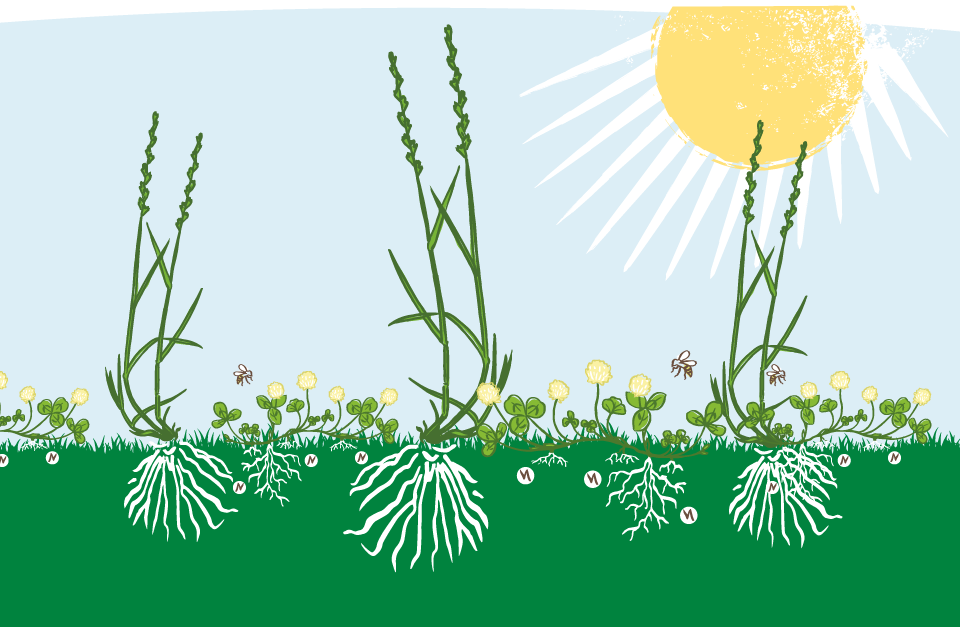

Suitable soils and optimum pH:
These leys are suitable for all but very light soils. Ideally pH 6-7.
When to sow:
These long-lasting leys take time to germinate and become established. It is therefore essential to sow when growing conditions are good and not too early in the spring before the soil is warm, especially if the mixture includes clover. They are often sown in spring but autumn sowings can be preferred due to more reliable rainfall, provided the seed is in by early September.
Once sown, roll immediately to ensure good soil-to-seed contact, rolling with a flat roll is best for even consolidation, however roll twice with a Cambridge roll if a flat roll is not available.
How to sow:
With long term leys it is extremely important to control perennial weeds prior to sowing, aim for several stale seedbeds before sowing.
As these mixes contain small seeded species such as timothy or clover it is best to sow at no more than 10mm into a fine seed bed. To create a denser sward with less bare soil for weeds either broadcast or drill in two directions at a half rate.
A cover crop of westerwolds ryegrass can provide additional bulk in the year of sowing but is not advisable on heavy ground as they may out-compete the other species in the mix.
These mixes can alternatively be undersown to a spring cereal which has been drilled at a reduced rate, using a full sowing rate for the ley mixture.
Management:
Light grazing with sheep or young cattle will consolidate new plants, encourage grass to tiller and control annual weeds (known as the ‘golden hoof’), alternatively roll in the spring after an autumn sowing to encourage tillering. Cutting for silage or hay is best left until the ley is well established in its second season.
Nutrient requirements:
These leys should receive no more than 100kg N/ha with the biggest demand (60kg N/ha) in March and April if a silage cut is to be obtained. Pochon Persistent requires very little or no N as the high clover content (30-50%) will fix N in the soil.
Yield potential:
Yields of 12t DM/ha should be achieved.
Date Posted: 22nd January 2018



